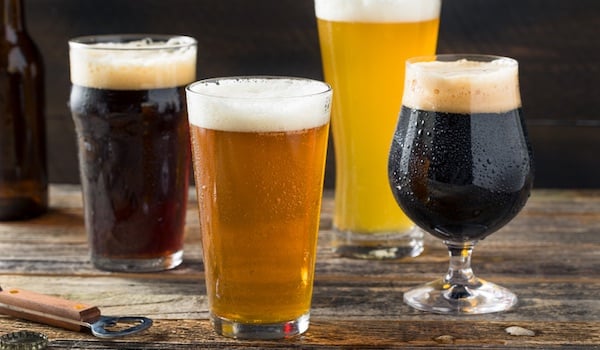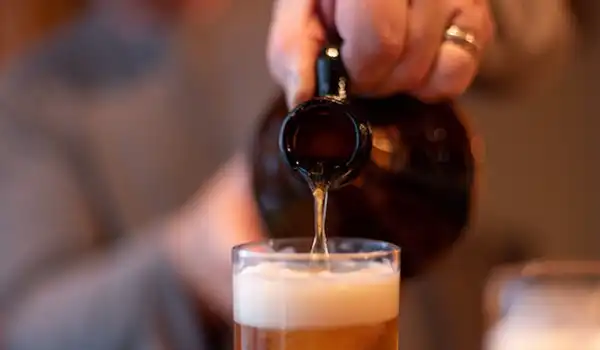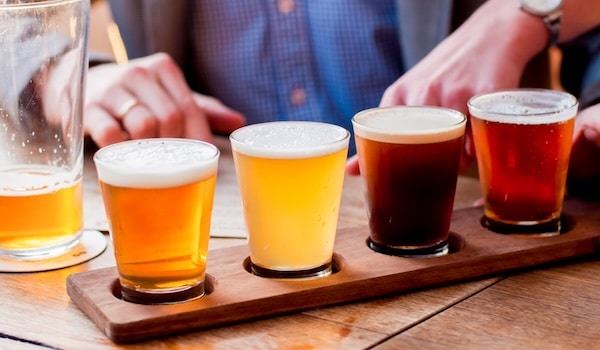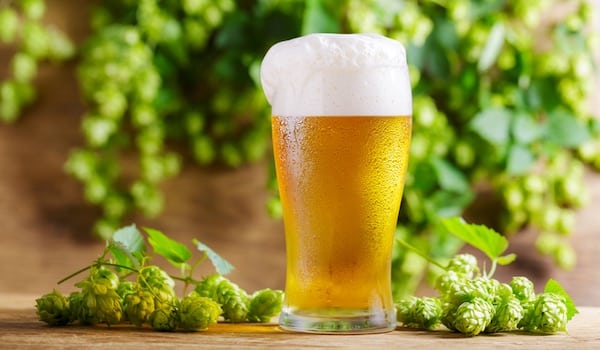
In This Article
- Introduction to Hoppy Beers
- What Are Hops in Beer?
- What Does “Hoppy” Mean in Beer?
- How Hoppiness Is Measured: IBU and Beyond
- Types of Hops and the Flavors They Impart
- Hoppy Beer Styles
- Why Some People Love or Hate Hoppy Beers
- Conclusion & Final Thoughts
Introduction to Hoppy Beers
The craft beer phenomenon has been going on for a few decades now, and the category certainly owes its popularity to a few styles. Stouts and saisons absolutely have their place in the craft beer hierarchy. But one style reigns supreme, and that is India Pale Ale, or IPA. In fact, most consumers will immediately associate the craft beer category with IPA.
Why are people so drawn to IPAs? It’s the hops. One of the key ingredients in beer is by far its most discussed. Hops drive character and are used for marketing products. They’re used in brewing every beer style, and even now are major drivers in making styles like lager more palatable to hop-headed beer geeks.
So what’s the deal with these green little nuggets that create so much flavor? We’ll take a deep dive into the history and science while also introducing some of the most popular varieties.
Here’s everything you need to know about hops in beer:
What Are Hops in Beer?
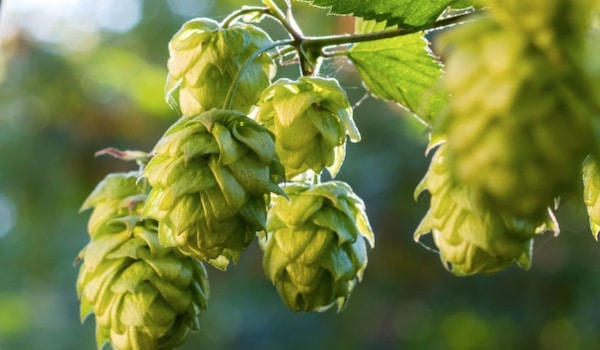
Where Hops Come From
Hops are the cone-shaped flowers of the Humulus lupulus plant, which is native to Europe, Asia, and North America but is now grown all over the world. The climbing vines of the Humulus lupulus are reminiscent of grapevines at vineyards and even share some similarities in terroir.
Why Brewers Use Hops
Originally, hops were used to preserve beer, but today’s brewers now use them to impart bitterness, aroma, and flavor to make their beers more interesting and delicious.
A Brief History
Hopping dates all the way back to the 9th century when European breweries in northern French and Belgian monasteries began adding the ingredient as a preservative. The practice continued for centuries, even as the purpose shifted towards a flavoring method.
The Science of Hops
The chemical composition of hops comes in the form of essential oils that inhibit bacterial growth in beer, thus preserving it for storage and shipment. There are also alpha acids (broken down by heat) that contribute bitterness. Beta acids are also a non-bittering byproduct of hops that provide the aroma and balance.
What Does “Hoppy” Mean in Beer?
Hoppiness Defined
“Hoppiness” is essentially a sensory perception you get when smelling and tasting beer. The term often refers to the bitter taste in your mouth when you drink the beer and the floral, citrusy, and piney aromas you smell.
Does Hoppy Always Mean Bitter?
But does hoppiness always mean bitterness? The answer isn’t exactly straightforward, but can be answered by “usually, but not necessarily.” That may not sound helpful, but bitterness truly is the most common trait you associate with hops. There are other significant traits found in most hop varieties, but there will almost always be at least some bitterness.
Styles Known for Hoppiness
Aromatics are an important function of hops in modern-day brewing, especially in hazy IPAs (which skew towards citrusy sweet flavors) and even certain Belgian ales. Still, the “hoppy” descriptor is most often applied to the bitter, piney, and dry-finishing American (West Coast) IPAs.
How Hoppiness Is Measured: IBU and Beyond
What Is IBU?
International Bitterness Units (IBU) are the primary measurement used to quantify the bitterness of a beer. A single IBU measures exactly 1 mg of iso-alpha acids per liter of beer. The scale goes up to 100, which is the threshold for the human palate’s ability to detect bitterness. Some breweries will claim to brew beers with an IBU score above 100, but this is usually a gimmick.
Why IBU Isn’t the Whole Story
Your palate’s perception of bitterness is affected by:
- Sweetness
- Alcohol content
- Carbonation
A 70 IBU Barleywine with plenty of malt sweetness and booze to balance it out might taste less bitter than a 50 IBU Pale Ale, where hops have less to compete with. It’s a helpful measurement tool, but it’s not the end-all-be-all.
IBU Ranges by Style
- Lagers/Saisons: 5–15 IBUs
- Pale Ales: 30–50 IBUs
- IPAs/Barleywines: 50–100 IBUs
What Is Dry Hopping?
In recent years, one of the buzziest brewing methods has been adding hops after the boil (when hops are traditionally added). This is commonly used in New England (or “Hazy”) IPAs and other styles where the aromas are enhanced without added bitterness. This is where you get the citrusy sweet (or “juicy”) flavors that are so popular today.
Types of Hops and the Flavors They Impart
Popular Hop Varieties
- Cascade: Fans of grapefruit will love this balanced hop that’s been a pillar of American brewing for decades. Expect balanced bitterness with floral and citrus aromas.
- Centennial: Found in craft mainstays like Two Hearted Ale, there’s a powerful bite from the bitterness. But Centennial also adds a citrusy bouquet to its dry finish.
- Citra: To call this hop variety “dank” might be an understatement. The first hop variety to really drive demand for the beers it’s used in will give off massive citrus and mango aromas. It’s tropical, but divisive.
- Amarillo: Sweet melon and peaches dance with sticky grapefruit aromas to balance out the bitterness of this widely used American hop.
- Saaz: One of the forefathers of hoppiness, this dignified hop has been lending earthy and herbal notes to classic German Pilsners and lagers for over a century. There’s a reason it’s classified as one of the four original “Noble” hops.
- Simcoe: A staple of West Coast hoppiness, you can expect the classic piney and resinous aromas from Simcoe in some of American craft beer’s formative IPAs.
- Galaxy: One of the true “hype” hops, beer geeks pine over Galaxy hops for their peach, guava, and orange zest aromatics. You’ll find them in brightly labeled cans of New England IPAs from trendy breweries.
- Nelson Sauvin: Hailing from New Zealand, this elegant hop varietal is grown in the same terroir as Sauvignon wine grapes and imparts a distinct dry fruitiness. You’ll find it in Hazy IPAs and even some Belgian-style Pale Ales.
Hoppy Beer Styles
IPAs (India Pale Ales)
India Pale Ales are synonymous with hoppiness at this point. There are a few sub-styles of IPA, ranging from bitter West Coast to aromatic and “juicy” Hazy/New England styles. Regardless of the genre, you can expect an IPA to be at least somewhat hoppy.
Double/Imperial IPAs
Packed full of hops and extra malts to boost the alcohol content, these beers are a hop-head’s dream. Expect high bitterness from Double West Coast IPAs and cloudy sweetness from Double Hazy IPAs.
Session IPAs
For a lower alcohol, but still hoppy option, brewers offer these pared down beers for drinkers wanting to have a few drinks with none of the guilt.
Pale Ales
In terms of drinkability and hoppiness, beers like Sierra Nevada Pale Ale hit the sweet spot. Expect a perfect balance of malt sweetness and hop bitterness with a dry finish.
Traditional Pilsners
The actual OG of hoppy beer, this style originated in Czech and German monasteries and prominently features Saaz and Hallertau hops. Expect a zippy or peppery hop bitterness and dry finish.
Modern Hoppy Lagers
Brewers are always tinkering, so they started dry-hopping Pilsners and other lagers to get the best of both worlds!
Why Some People Love or Hate Hoppy Beers
A Polarizing Flavor
The bitterness you get from traditional IPAs has certainly turned off its fair share of drinkers over the years. Certain palates prefer sweeter or more floral aromas from other styles.
Personal Taste Matters
A large segment of the drinking population really just wants a drinkable macro lager. Even some craft beer aficionados prefer the subtlety of a Saison or German Lager. Still, the popularity of traditional IPAs speaks for itself. Sensitivity to bitterness usually plays a role in these preferences.
How to Get Into Hoppy Beer
If you’re not accustomed to the bitterness or intense aromatics of a hoppy beer, the best way is to ease your way into this type of beer through lighter-hopped styles like Pilsner. And if it’s just not working for you, there are plenty of other beer styles out there!
Conclusion & Final Thoughts
Other elements can absolutely make a beer great, but none of them capture the attention of drinkers quite like hops. The variety of flavors you get from the hundreds (and counting) different hop varieties is one of the most exciting prospects of being a beer drinker. So make sure you’re as adventurous and open-minded when trying new hoppy beers! Also, make sure you give some non-IPA hoppy beer styles some love!


